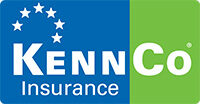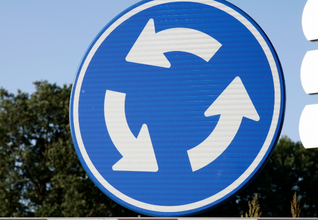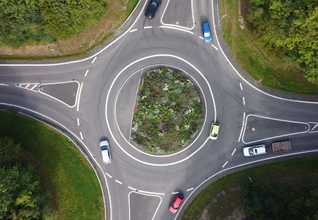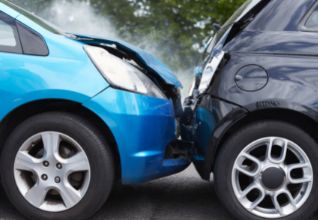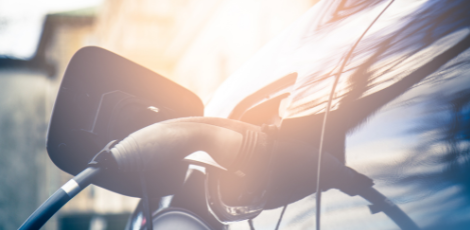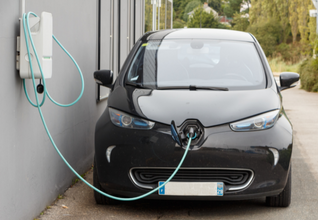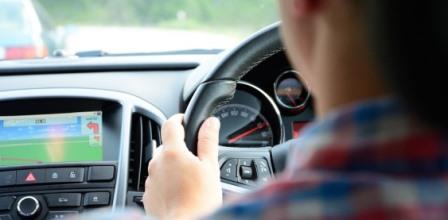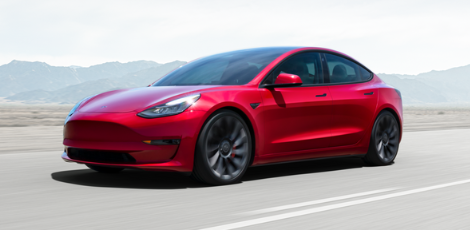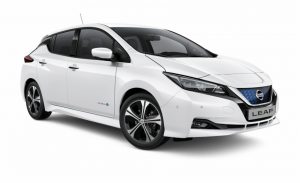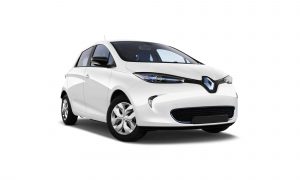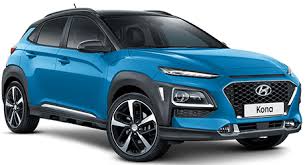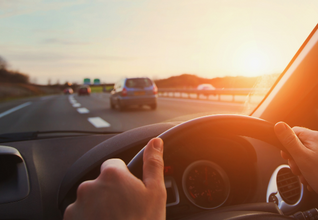When it comes to driving, tyres play a very important role in your vehicle’s performance and safety. They are the only part of your vehicle that makes contact with the road, which should make proper tyre maintenance and safety a priority for all Irish drivers.
As part of our 2024 Irish Road Safety Week campaign, we’ll take a look at why tyre safety matters and how you can keep your tyres in top shape.
Importance of Tyre Safety
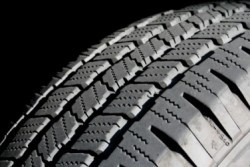
Tyres are the unsung heroes of your vehicle. They are what gives your car grip on the road, they support your car’s weight, and they absorb shock.
Driving on damaged or improperly maintained tyres can be a risky experience and can lead to accidents.
Key Aspects of Tyre Safety:
Tread Depth:
The tread on your tyres is designed to give your car grip and help you stay in control when turning, braking, and when encountering wet conditions or surface water.
In Ireland, the minimum tread depth is 1.6mm (1mm for motorcycles). This is a legal requirement, and not a recommendation so it’s important that your tyres meet this standard. However, most modern cars and tyres would have a tread depth of 8mm and the IATA recommend keeping at least 3mm of tread on your tyres for safety.
Over time, the tread on tyres can wear down which affects the performance and safety of the vehicle. So it’s vital that motorists are regularly checking their tyres and tread depth and replacing them before they reach an unsafe standard.
Proper Inflation:
A simple but often overlooked aspect of tyre maintenance is having the correct tyre pressure. Driving on under-inflated tyres can have a big impact on your car’s performance, fuel economy and safety.
The lack of air pressure means the tyres can’t fully or evenly support the weight of the vehicle which adds stress to the sidewalls and causes an increased risk of blowouts, while also affecting the handling of the car.
Tyres can also account for 20-30% of your vehicle’s fuel consumption. When driving on underinflated tyres, your car’s engine needs to work harder to move it forward, leading to higher fuel consumption over both long and short distances.
Additionally, underinflated tyres tend to wear more quickly and unevenly. Not only does this affect your car’s handling and performance, it can create an extra expense as you’ll likely need to replace your tyres more frequently.
Checking for Defects:
Motorists should regularly inspect their tyres and look out for any obvious damage such as cuts, bulges, or embedded objects. These can lead to sudden, and possibly catastrophic, tyre failure so if you do notice any of the above, avoid driving your vehicle until you can have it looked over by a professional.
Legal Requirements for Tyres in Ireland:
Driving on damaged or worn tyres isn’t just dangerous, it’s illegal.
Under Irish law all tyres must meet specific safety standards. You are responsible for ensuring that your tyres are roadworthy and meet the legal criteria. This is to keep you and other road users, as well as keeping you compliant with the law.
According to the RSA, all tyres must:
- Be the correct type and size for your vehicle
- be properly inflated
- be free from damage or defects
- have a tread depth of at least 1.6mm
If you are found to be driving on damaged or faulty tyres, you may be subject to legal action and incur substantial fines and/or penalty points.
Types of Tyres
Choosing the right tyre type for your vehicle and for the terrain and conditions is crucial for safety.
E-mark and S-mark Tyres [H3]
Understanding tyre markings helps ensure you choose the right tyres for your vehicle.
E-mark:
A tyre with an E-Mark indicates its fully compliant with EU and international safety standards, and has passed all performance and tread depth tests set out by the EU.
All vehicle tyres in the EU, whether new or second-hand, must bear an E-Mark.
S-mark:
S-Mark tyres are certified to reduce road noise levels leading to a quieter and comfortable driving experience. All tyres manufactured since 2011 have this mark.
‘S’ stands for sound and details how much noise is produced by the tyre and whether it meets EU and International standards.
Other Types of Tyres:
Summer Tyres:
- Best For: Warm and dry conditions.
- Benefits: Offer excellent grip and handling on dry roads.
All-Season Tyres:
- Best For: Varied weather, including light snow.
- Benefits: Versatile performance throughout the year.
Winter Tyres:
- Best For: Cold, icy, and snowy conditions.
- Benefits: Better grip and shorter braking distances in winter.
Buying Guide: New vs Second-Hand Tyres
Whether you’re buying new or second-hand tyres, it’s essential to make informed decisions that ensure safety, while getting value for money. The considerations for both are roughly the same.
However, there is less risk when buying new tyres. And the RSA recommend to buy new for safety reasons. If you do purchase second-hand or re-treaded tyres, make sure they carry and E-Mark on the side wall.
Check Tread Depth: Ensure there’s an adequate amount of tread and that it’s above the legal minimum. Most new tyres will have a tread depth of 8mm.
Brand and Quality: When purchasing tyres, go for reputable brands that you can trust and rely on to be safe and high quality. And always buy from a reputable garage or vendor.
Inspect for Damage: Look out for defects and signs of damage including cuts, bulges, and uneven wear.
Age of Tyres: Look out for the age of the tyres as buying anything older than six years may have reduced performance.
Compare Prices: Make sure you’re getting value for money (without compromising on safety or quality).
Tyre Maintenance
Regular maintenance extends tyre life, improves fuel efficiency, and, most importantly, keeps you safer on the roads. It is the responsibility of every motorist to maintain their vehicle and keep it roadworthy.
Adopting small and simple maintenance habits can save you money and keep your tyres in good shape. Here are some essential maintenance tips for keeping your tyres maintained:
- Regular Pressure Checks: Check your tyre pressure often (once a month) and keep tyres inflated to the recommended pressure for your vehicle. This can be done at practically any service station in Ireland – often free of charge
- Tyre Rotation: Rotate tyres every 10,000 km to ensure even wear.
- Balance and Alignment: Proper balancing and alignment prevent uneven wear and improve handling.
- Check for Damage, Defects & Debris: Before driving, check your tyres for signs of damage or defects. And clean away any debris like stones or sticks that might be trapped between the tread.
NCT and Tyre Checks
Another reason to keep your tyres in good nick is the National Car Test (NCT).
Testers will carry out a thorough inspection of your tyres and passing the NCT requires your tyres to meet specific standards. Before bringing your car into the test centre, you should always check your tyres beforehand to make sure they are compliant.
Focus Areas for NCT:
- Tread Depth: Must be above 1.6mm.
- Tyre Condition: No visible damage or excessive wear.
- Proper Inflation: Tyres should be inflated to the manufacturer’s recommended pressure.
Motorcycle Tyres
Motorcycle tyres have unique requirements compared to car tyres. As motorcyclists are more vulnerable road users, it is incredibly important that they pay extra attention to tyre conditions to ensure their safety on the roads.
Key Considerations for Motorcyclists:
- Tread Depth: Minimum of 1mm, but it recommended that tyres are changed before reaching this level.
- Tyre Pressure: Maintain the manufacturer-recommended pressure to ensure proper handling and control while riding.
- Regular Inspections: Check for cuts, bulges, and wear patterns frequently.
FAQs
Guide to Tyres and Tyre Safety

Written by KennCo Staff
Approved by Marketing Manager Noel Gavin
